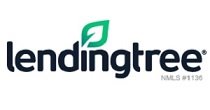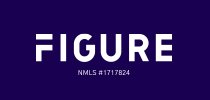Owning a home has many perks. You get to choose when to fix it up, how to paint and decorate it, and you’re not at the mercy of a landlord. But there’s an additional benefit to owning your own home: you can use your home equity to take out a loan so that you have access to capital when you need it.
You might have heard of HELOCs, or home equity lines of credit. Simply put, this is a loan secured by your home.
Let’s discuss how a HELOC works and whether using your home equity to borrow money is a good option for you.
What’s Ahead:
- What Is Home Equity?
- How Does a HELOC Work?
- Pros & Cons of HELOCs
- What’s a Home Equity Loan?
- Home Equity Loan vs. HELOC: Which Is Better?
- When Should You Use a HELOC?
- What Kind of Credit Do You Need to Get a Home Equity Loan?
- When Should You NOT Use Your Home Equity to Take Out a Loan?
- Where to Get Home Equity Loans or Lines of Credit
- Summary
What Is Home Equity?
Before we look at how a HELOC works, we have to discuss “home equity” so that you understand what you’re getting into.
Home equity is the current value of your home minus any outstanding loans (i.e., your mortgage). This is what you often hear about when people refer to “building equity” with real estate. The goal is to buy real estate and have it appreciate in value as you continue to make your mortgage payments.
Put another way, it’s how much you truly own of your home. The rest is how much the bank owns (i.e., how much you took out for a mortgage). So, your home equity increases as you pay off more of your mortgage or as your home increases in value.
For example, if you bought your home for $400,000 with a $300,000 mortgage (the amount you borrowed) and your property’s value has now gone up to $500,000, that means you have $200,000 in home equity that can be used to borrow money against: $100,000 down when you bought the house + $100,000 increase in value.
The amount of money that you can borrow will depend on the terms agreed upon by the lender.
How Does a HELOC Work?
A home equity line of credit is much like a personal line of credit: you have access to cash (credit) that you can use as you need it. The only difference is that with a HELOC, you put your home up as collateral.
Read more: Personal Loan vs. Line Of Credit
The HELOC will come with a maximum amount that you can borrow depending on how much equity you have in your home. You can then choose how much of the money you borrow and when you borrow it. You won’t be charged any interest if you don’t use the money.
Since you’re putting your home up as collateral, the lender is willing to loan you more money at a lower interest rate. What makes a HELOC attractive is that it’s almost like a credit card. You have the ability to borrow money when you want it without any questions. You could use your HELOC for home improvements or for personal reasons.
Pros & Cons of HELOCs
Pros
- You have access to a lot more money than with other loans. Since you’re borrowing money based on the equity of your home, you potentially have access to much more credit.
- You only borrow what you need. A major advantage of a HELOC is that you can access the money when you need it, rather than having to take out a lump sum loan.
- HELOCs have low-interest rates. Because your home is collateral, the lender can offer you a lower interest rate than if you were taking out an unsecured loan.
- You have flexible repayment options with a HELOC. You can spread out your payment terms for up to 30 years with a HELOC. During the draw period (typically the first 10 years), you’ll only have to make interest payments.
Cons
- You risk losing your house if you default. The biggest downside of a HELOC is that you’re putting your home up as collateral. So if you can’t make your payments, the lender could foreclose on your home.
- Variable interest rates. The interest rates on HELOCs are usually variable, which means they can go up or down over time. So you could end up paying more than you anticipated if rates rise.
- You might have to pay fees. Some lenders will charge application, origination, and annual fees for taking out a HELOC.
- It’s tempting to overspend. With access to so much credit (more than you would get with a personal line of credit), it can be tempting to justify costs and rack up debt you can’t afford to repay. It’s important to use a HELOC wisely and only withdraw only what you need.
What’s a Home Equity Loan?
Before we go any further, we should clarify one thing that confuses people who are new to the world of HELOCs: home equity loans and home equity lines of credit are not the same thing.
Just like with personal loans and personal lines of credit, a HELOC is access to credit that you can dip into whenver you wish. Whereas a home equity loan is a lump sum of cash that you borrow upfront, with a set repayment period and fixed interest rate.
Home equity loans are often referred to as a second mortgage, since you’re getting the money all at once (just like when you take out a mortgage and the bank pays for your house all at once).
Depending on how much home equity you have, you can qualify for a much larger loan and typically with a lower interest rate than with a personal loan, because you’re using your house as collateral.
Home Equity Loan vs. HELOC: Which Is Better?
By now, you’re probably wondering if you should go with a HELOC or a home equity loan.
If you’re looking to finance a large project, have a set amount in mind, and don’t plan on taking out another loan anytime soon, a home equity loan could be right for you.
But if you don’t know exactly how much money you need or when you want to use the money, you’re better off going with a home equity line of credit. A HELOC is ideal if you want flexibility with when you borrow the money and how much money you borrow.
Home equity loans have longer borrowing periods with fixed interest rates, meaning you have a more structured payment plan.
HELOCs, on the other hand, have variable interest rates. So while your initial rate might be low, keep in mind that it could easily fluctuate one way or the other due to macro-economic factors outside your control.
When Should You Use a HELOC?
A home equity line of credit is best for those who need a revolving line of credit over the course of a few years. You can spend as you go and you only have to pay for what you’ve borrowed.
There are a variety of reasons you could want a HELOC over a traditional line of credit or any other kind of loan:
Making Improvements to Your Home
Borrowing money against your home and investing it back into fixing it up makes a lot of sense. And a HELOC in particular could make a lot of sense for fixer-uppers that need a bunch of small improvements — that way you can continue to borrow money when you need it. Many folks use a HELOC to improve their homes.
Read more: Does Buying A Fixer-Upper Really Save You Money?
Here are some examples of how you can use a HELOC to increase the value of your home:
- Making necessary upgrades to the exterior. A new roof or a deck could make a huge difference in your home’s value.
- Investing in proper infrastructure for your home. You may have to upgrade or repair your plumbing or electrical systems.
- Upgrading your kitchen or one of your washrooms to be more modern.
The goal here is to take advantage of the equity in your home by using this capital to further increase the value of your home. Think of it as spending money to make money, home improvement style.
If you have a lot of equity in your home, then you can borrow plenty of money to make necessary improvements to continuously increase the value.
Consolidating High-Interest Credit Cards
HELOCs have traditionally low-interest rates for the creditworthy, so using a HELOC to pay off credit cards with interest rates at 15% or 20% (or higher!) can help you pay off debt quicker than, say, a balance transfer.
Read more: Should You Do a Balance Transfer?
Your credit history, equity, and income all factor into how much you’ll receive.
A Back-Up Emergency Fund
The great thing about HELOCs is that they’re sort of like credit cards. The money is there when you need it, so having it in addition to an emergency fund just in case you’re hit with a large, unexpected expense could be a lifesaver.
It’s particularly important right now, amid rising inflation and market instablity, to have options. You never know what can happen.
Read more: Emergency Funds: Everything You Need to Know
What Kind of Credit Do You Need to Get a Home Equity Loan?
Those with poor credit can still get home equity loans, but they should avoid HELOCs. And it’s very important to remember that in both cases, your home is up as collateral if you can’t pay back the lender. So, obviously, anyone who can’t feasibly see themselves being able to pay back a loan or HELOC in a timely manner should never take one out.
Also, if you have poor credit, or really anything less than perfect credit, you won’t get the greatest interest rate — which is something to consider if you can’t afford to pay back that interest quickly, since a HELOC typically comes with a variable interest rate. Variable interest rates will mean that you have fluctuating monthly payments.
If you own more of your home than you owe on it, you’ll definitely be seen as a lower-risk candidate. This means that the loan amount or line of credit you’ll receive will be higher. That’s another important reason to consider putting 20% (or more) as a down payment on your home when you buy.
Read more: How Much Cash Do You Really Need to Buy a Home?
When Should You NOT Use Your Home Equity to Take Out a Loan?
While HELOCs and home equity loans are a great opportunity for homeowners, there are a few times when both should be avoided.
If You’re Planning on Selling Your House Soon
If you’re planning to move and you might not be able to pay off your loan or line of credit quickly, you might not want to take out a home equity loan.
Before you move, all your debts on the house will need to be paid off. If you have a loan out on your house, you’re driving down the home equity, which doesn’t look good when you’re trying to sell.
If You Need a Last-Resort Loan
It’s important to reiterate that you’re putting your home at risk by taking out either of these loans. If you can’t pay back the lender, your house could be taken from you.
This is why you should stay away from home equity loans if you’re hit with a serious financial burden, since there’s a possibility you won’t be able to pay it back right away. If you’re unable to pay back the loan, you would put yourself into a dire financial situation.
If You Don’t Have a Clear Plan for the Money
While a HELOC can provide you with a financial cushion, it could easily lead to overspending. When you suddenly have all of this access to capital, it’s easy to justify every purchase as an investment or a wise move.
And we’ll say it again: your home is the collateral for the money that you borrowed. This can’t be emphasized enough.
On that note…
If You Have Poor Spending Habits
We mentioned earlier that using a HELOC to pay off credit card debt can be a good idea. It could, but not if you don’t address the reasons you got into debt in the first place. To truly get out of debt, you need to deal with your negative spending habits and come up with a way to avoid going into debt in the future.
Read more: How to Get Out of Debt on Your Own: A DIY Guide
Where to Get Home Equity Loans or Lines of Credit
LendingTree

The best place to start looking for a HELOC or home equity loan is LendingTree. You can easily compare a handful of rates all in one place and see which one is best for you.
At the time of writing, LendingTree has APRs as low as 2.99% for HELOCs of $100,000.
See what rates you qualify for at LendingTree or read our full review.
Figure

You should also consider going with Figure. They offer a 100% online application process so that you never have to leave the comfort of your own home.
They also promise quicker processing times for your HELOC, claiming that you can receive your loan funding within five days.
Figure offers HELOC fixed rates as low as 4.49%1 APR, and you can borrow up to $400,000.
See what terms you qualify for at Figure today or read our full review.
Summary
Now that we’ve gone over how a HELOC works, you should be better aware of what you’re getting into with this type of loan.
The good news is that a HELOC can give you access to credit for when you need it. The bad news is that you have to put your home up as collateral. So you’re going to want to make sure you’re confident you can pay back anything you borrow, before tapping into this equity.
¹ You will be responsible for an origination fee of up to 4.99% of your initial draw, depending on the state in which your property is located and your credit profile. You may also be responsible for paying recording fees, which vary by county, as well as a subordination fee if you ever ask Figure to voluntarily change lien position.*Available APRs range from 6.80% to 15.00%. The advertised APR includes a 0.25% discount for enrolling in autopay as well as the payment of a higher origination fee in exchange for a reduced interest rate, which is not available to applicants or in all states. The lowest APRs are only available to the most qualified applicants, depending on credit profile and the state where the property is located, and those who also select five year loan terms; APRs will be higher for other applicants and those who select longer loan terms. As representative example, for a borrower with a 60% CLTV and a 740 credit score who is eligible for and chooses to pay a 4.99% origination fee in exchange for a reduced APR on a five-year Figure Home Equity Line with an initial draw amount of $50,000 would have a fixed annual percentage rate (APR) of 8.21%. The total loan amount would be $52,495. Alternatively, a borrower with the same credit profile who pays a 3.99% origination fee would have an APR of 8.82% and a total loan amount of $51,995. Your actual rate will depend on many factors such as your credit, combined loan-to-value ratio, loan term, occupancy status, and whether you are eligible for and choose to pay a higher origination fee in exchange for a lower rate. Rates change frequently so your exact APR will depend on the date you apply. APRs for home equity lines of credit do not include costs other than interest. Property insurance is required as a condition of the loan and flood insurance may be required if your property is located in a flood zone. Figure Lending LLC dba Figure. 15720 Brixham Hill Avenue, Suite 300, Charlotte, NC 28277. (888) 819-6388. NMLS ID 1717824. For licensing information go to www.nmlsconsumeraccess.org. Equal Housing Opportunity. Licensed in Alabama 22533, Alaska AK1717824, Arizona 0948458, Arkansas 114692, California: Loans are made and arranged pursuant to a Finance Lenders Law License, Licensed by the California Department of Financial Protection and Innovation under the California Finance Lenders Law (License 60DBO81967), Delaware 026994, Florida MLD1636, Georgia Residential Mortgage Licensee 61229, Idaho MBL-9625, Indiana 39933, Iowa 88893478 and 2018-0048, Kansas MC.0025537 and SL.0026703, Louisiana 1717824, Massachusetts Mortgage Lender License ML1717824, Michigan FL0021494, Mississippi 1717824, Missouri 19-2421, Montana 1717824, Nebraska 1717824, Nevada 4823, New Hampshire 22423-MB, Licensed by the N.J. Department of Banking and Insurance, New Mexico 1717824, North Carolina L-180811, North Dakota MB103310, Ohio RM.804317.000, Oklahoma ML011894, Pennsylvania 66882, South Dakota ML.05202, Tennessee 151185, Washington CL-1717824, West Virginia ML-36248, Wisconsin 1717824BA


